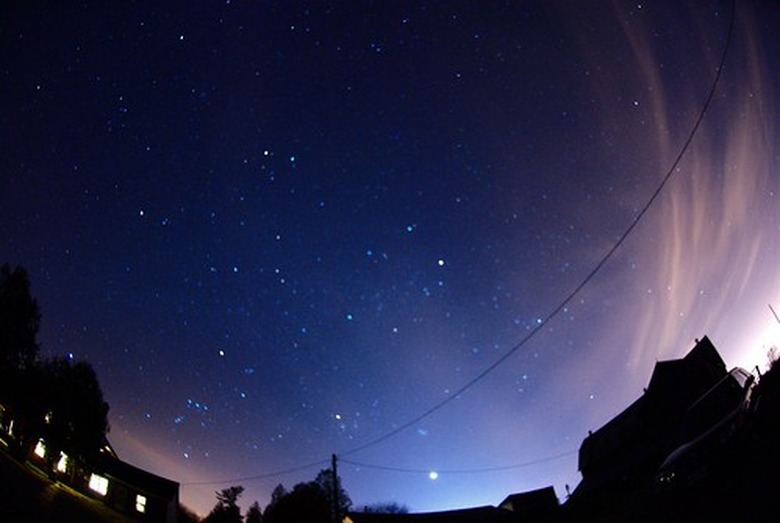Is Orion's Belt Part Of The Big Dipper?
Two of the most recognizable star patterns in the night sky are the belt of Orion and the Big Dipper. These two "asterisms" are in separate constellations.
Asterisms
Asterisms
An asterism is a grouping of stars or a number of stars that form a pattern in the sky.
Ursa Major
Ursa Major
The Big Dipper is part of the constellation Ursa Major, a large region of the sky that represents a great bear. The dipper consists of seven stars, with three forming the handle of the dipper and the other four composing the bowl.
Orion's Belt
Orion's Belt
Orion's belt consists of three stars in the middle of the Orion constellation that are so close together they look as if they could be the hunter's belt. By following a straight line from right to left through Orion's belt, an individual can trace a path to Sirius, the brightest star in the evening heavens, within the constellation Canis Major.
Considerations
Considerations
The Big Dipper is always visible throughout the night in most of the Northern Hemisphere, while observers in the U.S. may view Orion best in the autumn and winter.
Features
Features
Both of these asterisms contain, or are close to, other interesting features within their constellations. The second star in the Big Dipper's handle is a double star system visible to the unaided eye. Hanging off Orion's belt is a "dagger," with the middle star in it actually the Great Orion Nebula.
References
Cite This Article
MLA
Lindell, John. "Is Orion's Belt Part Of The Big Dipper?" sciencing.com, https://www.sciencing.com/orions-belt-part-big-dipper-5701992/. 13 March 2018.
APA
Lindell, John. (2018, March 13). Is Orion's Belt Part Of The Big Dipper?. sciencing.com. Retrieved from https://www.sciencing.com/orions-belt-part-big-dipper-5701992/
Chicago
Lindell, John. Is Orion's Belt Part Of The Big Dipper? last modified March 24, 2022. https://www.sciencing.com/orions-belt-part-big-dipper-5701992/
